Preparing for the May/June WAEC Examination 2025? If you are writing Physical Education as one of your subjects, this post is for you. Here, you will find the detailed WAEC syllabus for Physical Education, covering all the topics that could appear in the exam.
Using the WAEC Syllabus for Physical Education as a guide during your revision will help you stay focused and prepared to answer any question that comes your way, increasing your chances of scoring high.
If you are a tutor coaching students for the WAEC exam, following this syllabus closely will help you give the best guidance, ensuring your students are well-prepared to succeed. Keep reading to see the complete WAEC Physical Education syllabus.
WASSCE Physical Education Exam Scheme (200 marks total)
Paper 1: Theory of Practice (100 Marks, 2 Hours)
This paper has 4 parts:-
- Track and Field: 3 questions given, answer any 2 (40 marks)
- Ball Games: Choose 1 question out of 2 (part of 60 marks total)
- Racket Games: Choose 1 question out of 2 (part of 60 marks total)
- Gymnastics: Choose 1 question out of 2 (part of 60 marks total)
So, from Ball Games, Racket Games, and Gymnastics combined, you will answer 3 questions for 60 marks.
Paper 2: Theory & Other Topics (100 Marks, 2 Hours)
This one has 3 sections:-
- Multiple Choice: 50 questions from the whole syllabus (50 marks, 50 minutes)
- Short Answers: Structured questions, answer in brief (20 marks, 25 minutes)
- Essays: 5 questions provided, answer any 3 (30 marks, 45 minutes)
Note: This paper covers everything except the Track and Field/Practical stuff you did in Paper 1.
WAEC Syllabus For Physical Education
Below is a summarized syllabus for physical education.
| Section | Topics | Key Points |
|---|---|---|
| A. Foundation of Physical Education | 1. Principles & Philosophies | Understand the core principles guiding physical education. |
| 2. Physical Fitness | General fitness vs. fitness for specific activities. | |
| 3. Health & Personal Hygiene | Importance of hygiene, care of the body, sportswear selection and maintenance. | |
| 4. Recreation | Indoor/outdoor activities; examples; safety; differences from lifetime sports. | |
| 5. Competitive Sports | Intramural vs. extramural; athletics; minor vs. major games; role of lead-up games. | |
| 6. Corrective & Adaptive Programs | Types of handicaps; remedial exercises; social/emotional issues; attitudes towards handicapped. | |
| 7. Concept of the Whole Man | Interdependence of body systems; physical education philosophies (Spartan vs. Athenian). | |
| B. History & Development | 1. Historical Background | Evolution of physical education; West African development; pioneers. |
| 2. Foreign PE & Sports | Greek festivals; ancient and modern Olympics – origin and importance. | |
| C. National & International Competition | 1. National Championships & Festivals | Types; sports associations, NSC, NSSF; differences between festivals and championships. |
| 2. Africa Games | History; role of Baron Pierre de Coubertin; first games in 1965. | |
| 3. International Sports Bodies | Examples (IOC, FIFA, IAAF, etc.); roles and functions. | |
| 4. International Competitions | World Secondary Schools Soccer; ISSF. | |
| D. Basic Human Anatomy & Physiology | 1. Skeletal System | Main bones/joints involved in movement. |
| 2. Muscles | Major muscles; isometric and isotonic contractions. | |
| 3. Somatotypes | Body types: endomorph, mesomorph, ectomorph; pros and cons. | |
| 4. Posture | Good posture features; common defects (kyphosis, scoliosis, lordosis, flat foot). | |
| 5. Nervous System | Brain, spinal cord, nerves; reflex actions. | |
| 6. Circulatory System | Heart, blood vessels; pulse rate; exercise effects. | |
| 7. Respiratory System | Respiration types; gas exchange during exercise. | |
| 8. Hormones | Role of adrenaline in exercise. | |
| 9. Nutrition | Balanced diets; athlete nutrition; pre-game meals. | |
| E. Basic Principles of First Aid | a. Sports Injuries | Bleeding, sprains, fractures, cramps, strains, dislocations, bruises, muscle pulls. |
| b. First Aid & Box | Definition and essential contents. | |
| c. Special Conditions | Heat stroke, exhaustion, drowning, shock, fainting, muscle fatigue. | |
| d. Artificial Respiration | Types and uses. | |
| e. Safety Precautions | General safety in physical education. | |
| F. Simple Mechanics of Motion | 1. Lever System | First, second, third class levers in the body. |
| 2. Principles of Motion | Gravity, work, velocity, balance, angle of trajectory. | |
| 3. Sports Application | Examples: tennis serve, throwing, diving, soccer kick. | |
| G. Theory of Practice: Athletics | 1. Track Events | Sprints: start types; relays: baton take-over; hurdles: techniques; middle/long distance: strategy, rules. |
| 2. Field Events | Throws: discus, javelin, shot put; Jumps: high, long, triple, pole vault; equipment specs. | |
| H. WASSCE Physical Education Topics | 1. Games | Ball (basketball, handball, soccer, volleyball, hockey) and racket games (tennis, table tennis, badminton): court sizes, equipment, skills, rules, officiating. |
| 2. Gymnastics | Mat and box work; basic moves (rolls, vaults, flips); safety and correct techniques. | |
| 3. Sports and Society | Sports’ role in unity, teamwork, leadership, national pride; causes of violence and crowd control in sports. | |
| 4. Femininity and Sports | Women’s sports participation; effects on bodies; myths about women and sports performance. | |
| 5. Drug Education | Types of drugs; impact on sports; drug abuse awareness and testing. |
Tips for Passing the 2025 WAEC Physical Education Exam
- Start your revision early to avoid last-minute stress.
- Break down the syllabus into small, manageable topics and study a little every day.
- Use the WAEC Physical Education past questions to practice. This helps you understand the exam style and the types of questions to expect.
- Focus on both theory and practical aspects since both can appear in the exam.
- Form or join study groups to discuss topics and quiz each other.
- Take regular short breaks during study to keep your mind fresh.
- Stay healthy by eating well, getting enough sleep, and exercising regularly; a healthy body supports a sharp mind,.
- Don’t just memorize, try to understand concepts so you can answer questions easily.
If you find this helpful, please share this post with other candidates preparing for WAEC. And if you have any questions, drop them in the comments below; we will provide accurate and timely responses.
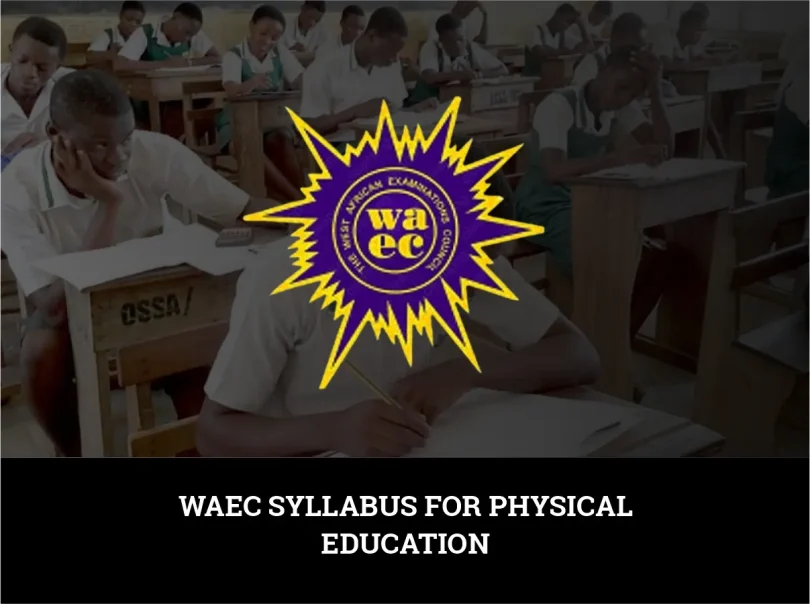
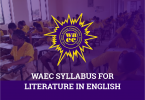
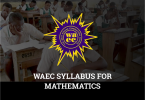
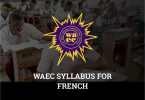

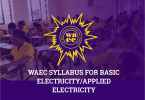

Leave a Comment